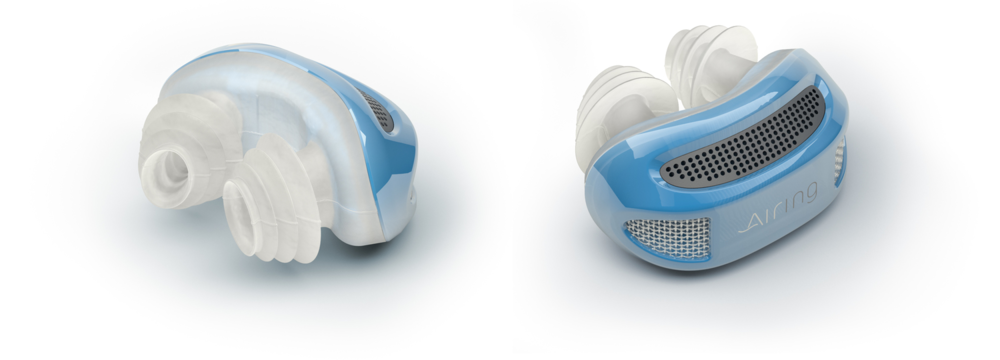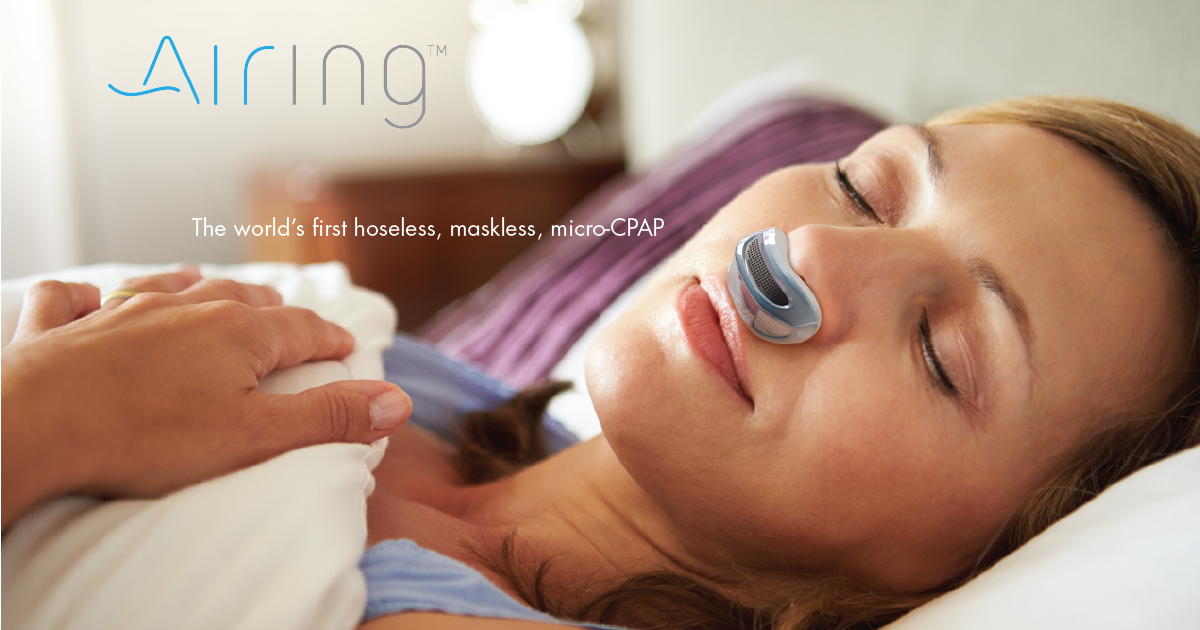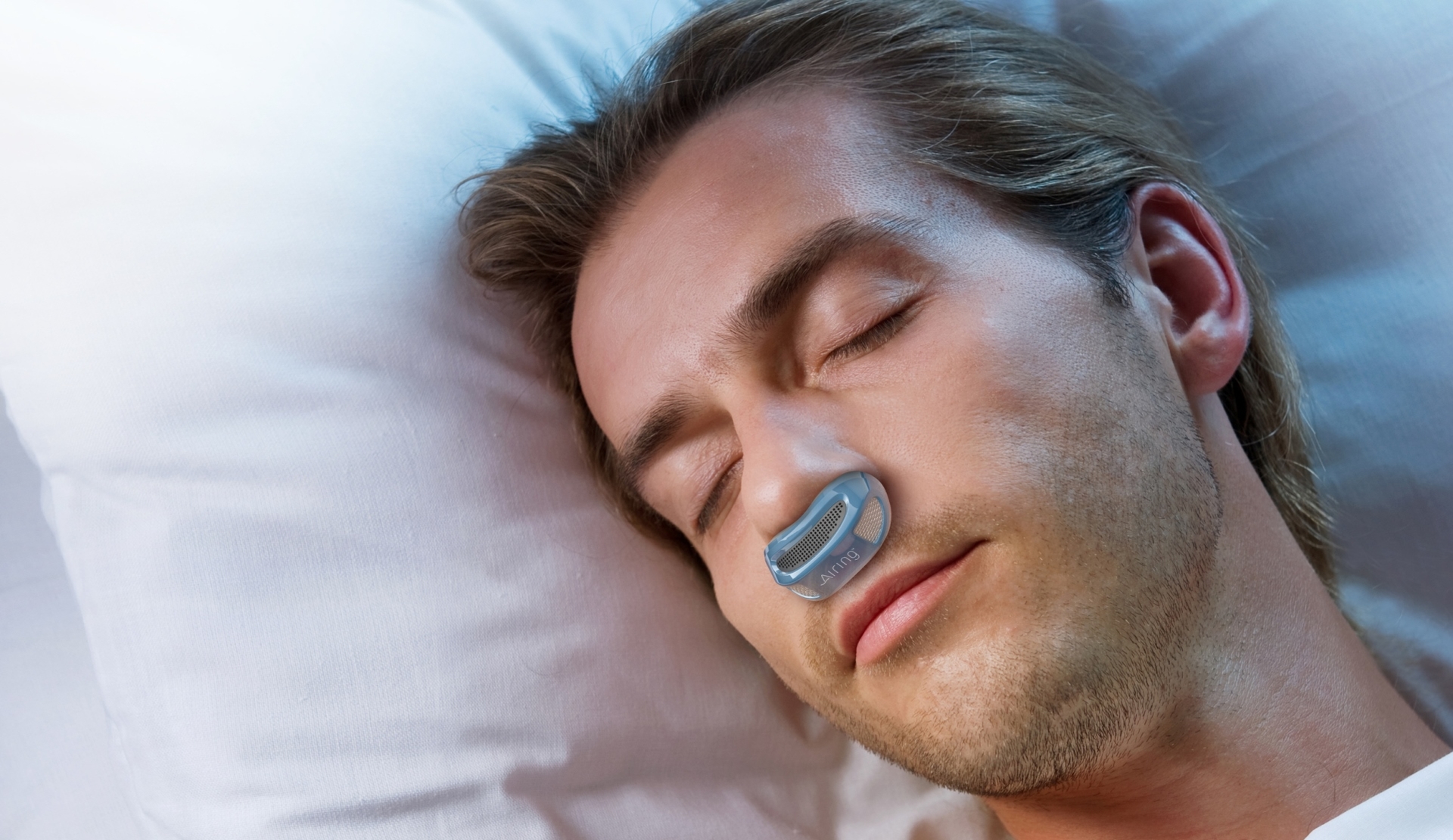Obstructive Sleep Apnea (OSA) is typically caused by a blockage of the airway when the soft tissue in the rear of the throat collapses during sleep. Untreated, OSA causes a number of serious health problems, including high blood pressure, cardiovascular disease, memory impairment, weight gain, and headaches. The standard treatment for OSA is what is known as 'Continuous Positive Airway Pressure,' or CPAP. CPAP machines can mitigate this problem, but their poor design causes sleep apnea sufferers to give up on it: 80% of CPAP users stop using it within one year. Airing intends to change that with a revolutionary design that will work as well as any other CPAP machine, and patients won't have to deal with cumbersome, uncomfortable masks. Another reason patients give up on the traditional CPAP masks is that they get dirty and need to be cleaned constantly. Not so with Airing. Each Airing device is designed for one night’s use only and is recyclable. As a result, every night you get a clean device with no cleaning to do.
Airing also liberates you from the 'mess' of uncomfortable straps and the noisy hum that both come with other CPAP machines. Airing’s design is a byproduct of several inventions, chief of which are the micro-blowers originally intended for heat regulation for chips in computers. These micro-blowers are entirely contained within the Airing device, so there is no need for external air hoses. Each Airing device is battery operated, so no need for any power wires. Just 'plug' the comfortable buds into your nostrils and breathe all night long.

CPAP masks have a hard time maintaining a perfect seal onto your face as you move during sleep. The sound of rushing air will wake up not only you but also your partner. The hoses used by CPAP masks drag on the end table and on the bed, causing sleep disruptions. But Airing creates a tight fit inside your nostrils with no hoses to catch on anything. Better yet, snoring is eliminated.
The pressure generated by the typical CPAP machine ranges from 1 to 20 centimeters of water (cmH20), known as the treatment number. A doctor or sleep technician tests the patient to determine the appropriate treatment number. The Airing device has been designed to generate the full range of treatment pressures up to and in excess of a treatment number of 20. This is possible because of the strength of the electrostatic force that drives the micro-blower plates, like bellows, open and closed, together and apart. Each micro-blower can push a small amount of air at significant pressure, and hundreds of micro-blowers work in parallel to achieve the required volume to effectively treat the particular patient’s sleep apnea.

Airing devices will be available initially in a range of pressure values so that you will be able to obtain the device with the treatment number prescribed for you, much like contact lenses. The devices are adaptive so that they will self adjust (like some current high-end CPAP machines) to provide the exact pressure for effective treatment.
Think about how liberated you could be with not just one good-night sleep, but hundreds of them. Think about health problems you will avoid. Think about the energy you will have. Think about how much more productive you will be at work, the potential car accidents you’ll avoid, even your golf handicap decreasing by 3 shots. In short, think about how liberated you will be when you start using Airing to manage your sleep apnea. The Airing device has been designed so as not to require active humidification. The human nose has evolved to filter the air it breathes in through a pathway with tiny hairs and to humidify this pathway with every exhalation.

The Airing is powered by a zinc-air battery, which lasts eight hours. It provides about ten times more stored energy in the same space as the same-sized Lithium-ion battery. In fact, a rechargeable Lithium-ion battery that could last through the night would make the device too heavy for convenient and comfortable use, this is the primary concern.
Zinc-air is a proven and inexpensive technology. It was used for years in Polaroid film packages and can be manufactured cost-effectively using the roll to roll process. And unlike some of the other caustic, more corrosive, battery technologies, the Zinc-air is environmentally benign - basically a common metal and soap. A future design may use a power source that is rechargeable without being excessively bulky or heavy. But today, Zinc-air is the best choice to get a working Airing device into the hands of those who are desperately seeking relief from traditional CPAP machines.
The team has switched over to a new material which is less rough and should perform better. The residual stresses in the film could be affecting the valve movement. Airing team is still exploring this issue, but it seems that the inherent stress in the film may not be a problem. With the new 3D laser scanning microscope, they are now able to take very accurate measurements of surface roughness. It also can give a precise understanding of the micromachining quality; for example, how flat the valves are.


